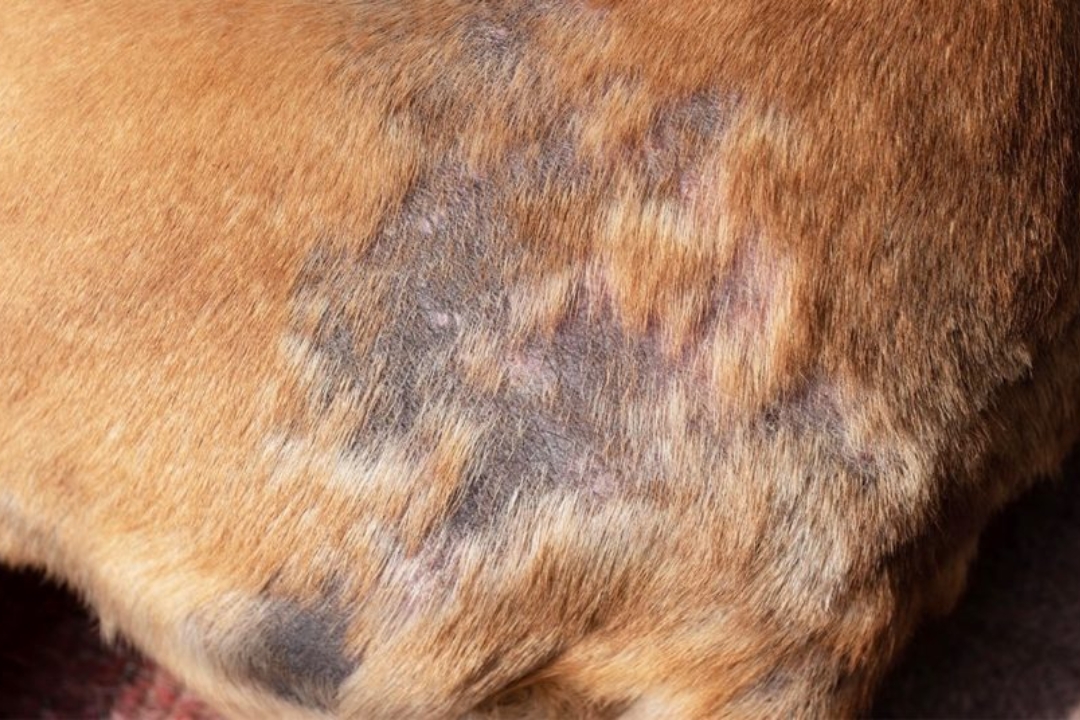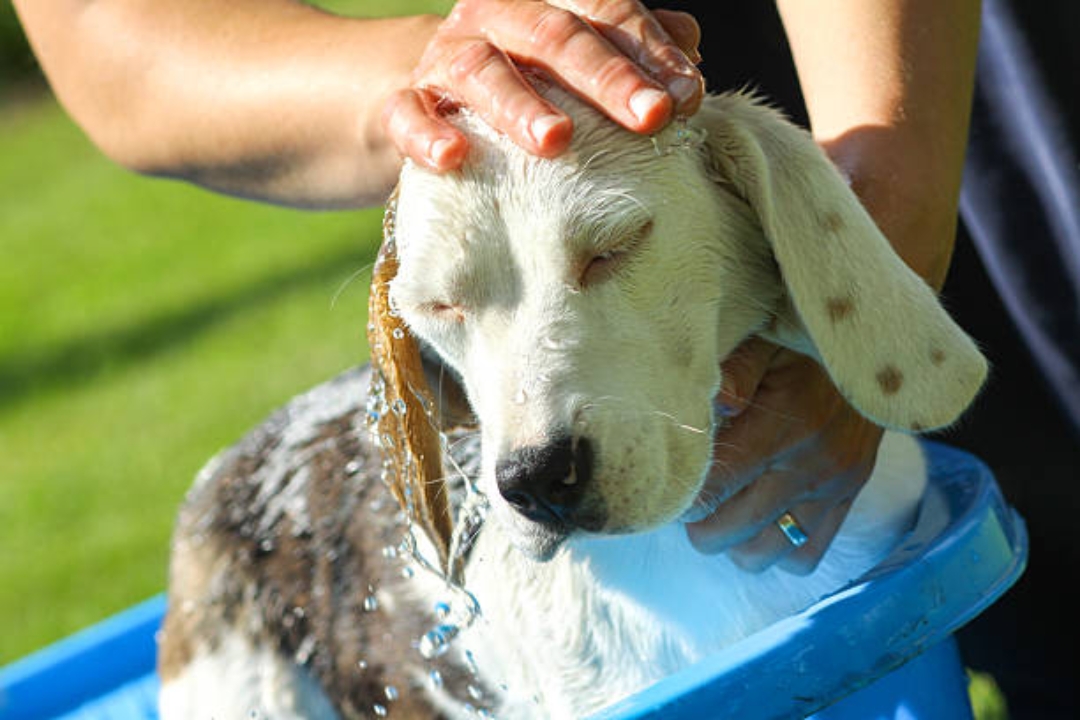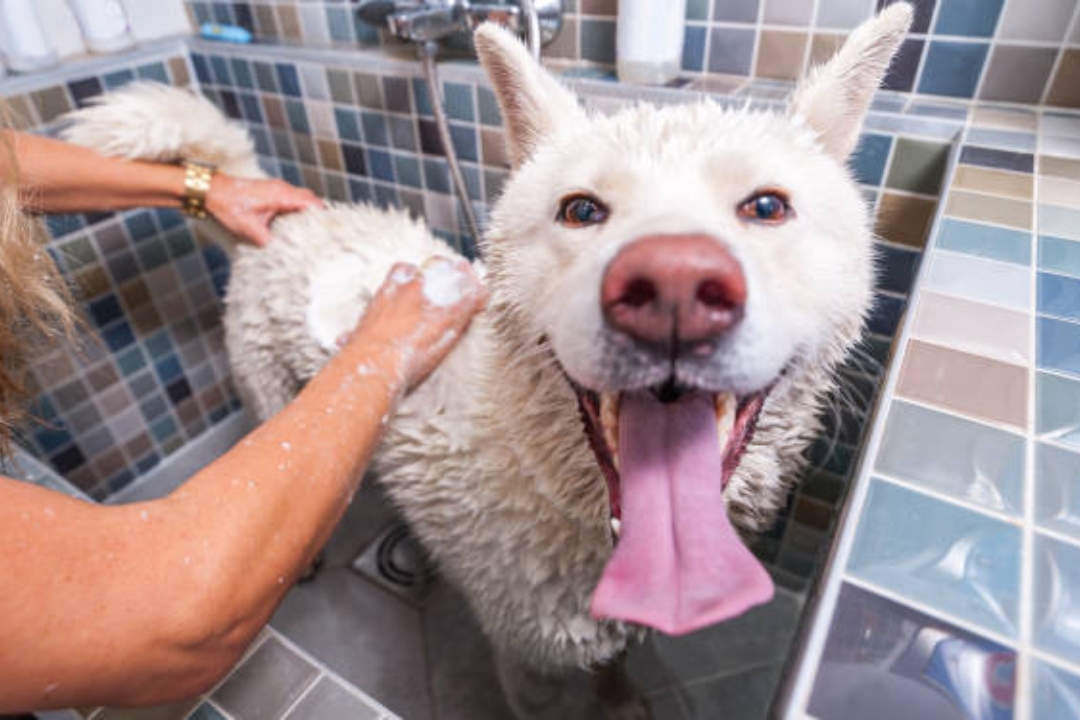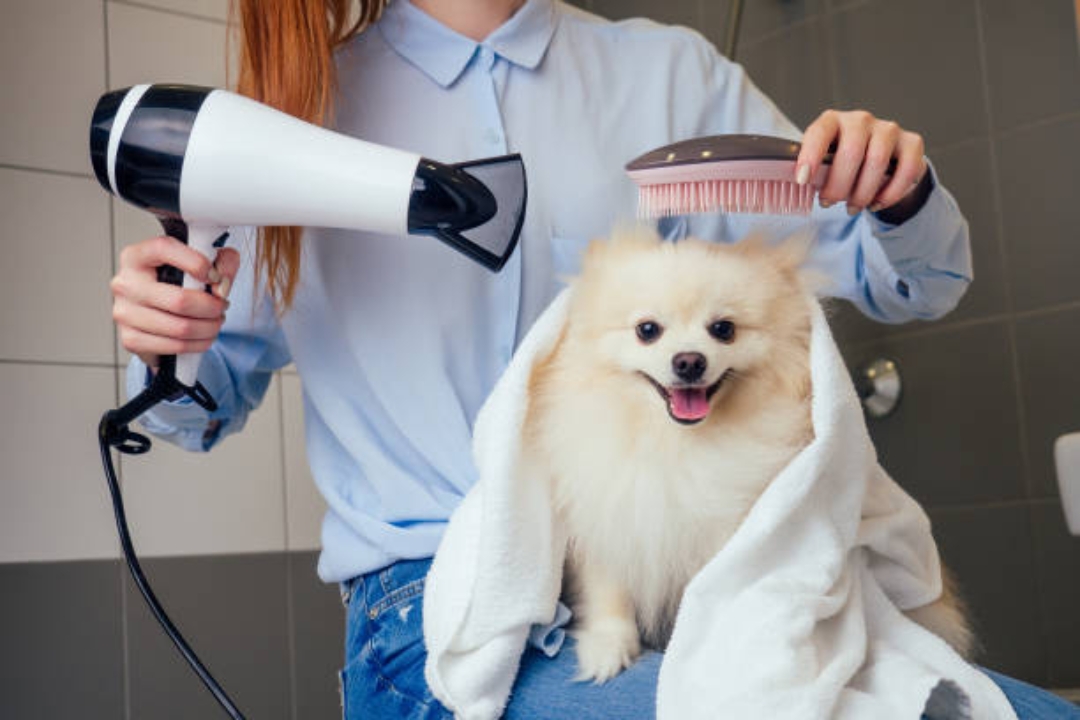Table of Contents
Bath time can be a stressful experience for both dogs and their owners. Many pet parents may wonder do dogs like cold water or warm? It turns out, when it comes to bathing your furry friend, warmer is better!
When using warm water during baths for any breeds, owners can expect a more compliant and happier pet. Research suggests that warm water can be better for your pet’s health and overall comfort level during bath time. Warm water can make the entire process more comfortable and enjoyable for both the dog and the owner.
Especially dogs with sensitive skin. Not only will it make them feel more relaxed and comfortable when using warm water, but it also helps keep their skin from drying out and their coat clean and shiny afterwards. Plus, ensuring that their baths are comfortable will make them happier pets in general!
Using warm water helps reduce the risk of skin irritations by removing dirt, bacteria, and other contaminants from their fur. Warm water opens pores which allows shampoo and other cleansing products to penetrate deeper into fur follicles resulting in a cleaner coat of fur after bathing.
It’s much easier to clean your pup with warmer temperatures since cold water may cause them discomfort or even shock them into trying to get away from you even more than usual. It also helps to decrease anxiety that some dogs may experience when getting wet in general.
Colder temperatures can cause the pores to close up, making it difficult for soap to penetrate effectively, resulting in an unhappy pup with a matted coat post-bath. Additionally, using cold water can be uncomfortable – especially when washing larger breeds – leading to a less compliant pet during bath time.
Ultimately, you’ll have a more compliant and happier pet if you use warm water when bathing your pup – no matter how big or small they are!
Is it cruel to leave a dog alone all day?
We all know how much our furry friends hate to be alone. But what if you have a job that requires you to leave the house for extended periods of time? Is it cruel to leave your dog alone all day?
It is a common misconception that dogs can be left alone for long periods of time, however the truth is adult dogs shouldn’t be left alone for more than four hours. Leaving a puppy or adult dog unattended for too long can cause anxiety, behavioral problems, and health issues.
This is especially true if they are puppies or senior dogs as they require extra attention and care. Dogs need companionship and stimulation, so it’s important that when you do go out, you provide them with activities like chew toys or a comfortable blanket in order to keep them occupied. Furthermore, ensure that your pooch has access to enough food and water, as well as a place to go potty if needed.
Leaving an animal in isolation without any human contact or interaction can lead to depression, stress, and other related psychological issues. Dogs are social animals by nature and need regular attention from their owners; when they are not getting the interaction they crave they may display signs of distress like barking excessively or chewing on furniture.
What happens if you don’t bathe your dog enough?

It’s an important question to consider when it comes to the health and wellbeing of your pet. Many pet owners understand the importance of a well-groomed pup. However, not bathing your dog often enough can lead to serious consequences. What happens if you don’t bathe your dog enough?
While dogs only need infrequent baths, regular bathing can help maintain their coat and keep their skin healthy. Conversely, not bathing them enough can lead to a host of issues. It can cause their coats to become dry and brittle, which may lead to irritation of the skin and even cause fleas.
Fleas are small parasites that feed on mammal blood and can easily be passed from one animal to another. If left untreated, flea infestations can cause extreme itching for the affected animal as well as discomfort and potential infections due to scratching or biting at their own skin. In addition, dogs who are not bathed regularly may experience bad odors due to excess dirt or oils building up in their fur.
This also may contribute to excessive shedding, which means more fur all over your furniture! Additionally, dirt and bacteria from outdoor activities like walks or playing in the yard can build up on their skin and cause irritation or discomfort. As such, an unclean pup is at higher risk for developing skin conditions that require veterinary attention for proper treatment.
What is the best time to give a dog a bath?

Giving your dog a bath is an important part of keeping them healthy and happy, but it’s also important to choose the right time for the task. Many pet owners wonder what is the best time to give their dog a bath.
The answer is that it’s wise to bathe your dog early in the day so they will have plenty of time to dry before their evening walk, especially if they have thick fur and can enjoy all the benefits of being freshly clean. This will not only keep them comfortable and prevent chills, but will also help keep your home clean and free of pet odors.
Bathing your dog at an earlier hour also helps keep them cool during summer months. Not only will your furry friend be more comfortable with a cool morning bath, but also because they’ll be able to dry off faster and feel refreshed sooner than later in the day. Plus, giving them a good wash first thing in the morning gives you time throughout the day to brush their coat and ensure they look great for their evening stroll!
Do baths make dogs happy?

A bath may not be a dog’s favorite thing, but after they’ve been through the process of getting a scrub down, some dogs experience an overload of emotion that leads to a wild post-bath celebration. It’s no surprise that baths are rarely welcome by our furry friends, so when it’s over and done with, many dogs can’t contain their excitement. Whether it is relief from being free of the water or just pure happiness at being clean again — doggy post-bath hype is real and often quite entertaining to witness.
The exact reason behind this behavior isn’t fully understood yet, but one accepted reason is dogs go “crazy” after a bath because they experience a mix of emotions from being wet. On one hand, they feel relief from no longer being soiled or sticky – especially if the bath was necessary to remove something unpleasant such as fleas or dirt.
On the other hand, some pets are genuinely happy when their fur is squeaky clean and fragrant with shampoo. Finally, some experts believe that after a bath dogs. Instinctively seek out familiar scents in an attempt to return to their normal state of being. All these factors combined create post-bath hype in many furry friends!
How do I dry my dog after a bath?

Air drying is an effective, low-maintenance method for keeping your dog clean and dry after a bath. It’s a natural and cost-effective solution that can give your pup the perfect post-bath look.
Here are some tips on how you can use air drying to keep your furry friend looking their best.
First, give your pup a good shake after the bath to remove excess water from the fur. For medium- and long-haired dogs, use a towel to gently absorb any remaining moisture before you let them shake off again.
Towel dry your pup as much as possible before you let them out of the tub. This will help remove excess water so that the air drying process goes quicker and more evenly.
Then take your pup outside in a sunny spot or into an open area with good airflow. Such as in front of a fan or near an open window for about 10 minutes. So they can naturally dry off in the breeze or warm air.
Air dryers also offer an easy and efficient way to get the job done quickly. But before you bring out the air dryer for your pup. It’s important to know how to use it properly and safely.
When choosing an air dryer for your furry friend, select one that has multiple adjustable settings. This will allow you to adjust the airflow from light breezes to high-velocity jets of air. Depending on what best suits your dog’s coat type and size. It’s also important that the air temperature is warm but not too hot. As this could cause burns or discomfort for your pooch.
And then regularly brush their fur while they are drying off to avoid knots forming in their coat due to dampness.
How do you get rid of puppy smell?

Vinegar is a natural cleaning option for tough pet odors, especially when paired with baking soda. It’s an easy and cost-effective way to get rid of those unpleasant smells that come from living with furry friends. Not only does vinegar work wonders on getting rid of puppy smell. It can also be used in combination with baking soda for more serious pet odors.
Baking soda alone can be used on cushions and bedding for an extra powerful, odor-eliminating punch. Vinegar gives it an extra boost when it comes to tackling stubborn odors. Mix equal parts of white distilled vinegar and water into a spray bottle. Then shake it well before using it to ensure the mixture is homogeneous.
When using vinegar as a cleaning agent, it’s best to choose a spray bottle. Spray it directly on surfaces or fabrics where there is a strong smell of pet urine, stool, vomit and other odors. This will also allow you to target the affected areas more effectively. Once you’ve sprayed the spot, let the solution sit for around 10 minutes before wiping away with a damp cloth or sponge.
How often should you brush your dog?

No matter how long your dog’s coat is, it’s important to brush them every couple of days. Knowing how often you should brush your dog can help keep their fur and skin healthy and free from matting or tangles.
How often you should brush them depends on the length and type of fur they have. Generally speaking, it’s a good idea to brush your dog every couple of days. This helps to keep dirt, debris, and mats out of the fur and promotes proper circulation.
Regular brushing helps to remove loose or dead hair, and dandruff from their coat while stimulating the natural production of oils. Which can give a glossy sheen to the fur and ensure that their skin remains free from irritation.
Take extra care when brushing sensitive areas. Like around the ears, tail, and paw pads as these require more gentle strokes with a soft-bristled brush or comb. Giving your pup regular brushing sessions also helps prevent skin problems caused by excess dirt buildup in their fur.
Can I bathe my dog with human shampoo?

The answer is most likely no. Human shampoos are designed for humans, and using them on your furry friend can strip their coat of natural oils and cause irritation. Dogs have sensitive skin and require a very different type of care when it comes to bathing. Using the wrong kind of shampoo can be detrimental to their health and wellbeing.
The best way to keep your pup smelling fresh and looking great. Is by opting for something that is gentle and specifically designed for sensitive skin, like a canine-specific shampoo or conditioner. Canine shampoos contain ingredients that help maintain the pH level in dogs’ coats. While also providing moisture, conditioning, protection from fleas, ticks, and other parasites, as well as protection against bacteria and fungi growth.
However, there are also alternative solutions available. If you’re looking for a quick and easy way to give your pup a bath. Baby shampoo is one such option – just make sure to use a very small amount and rinse thoroughly.
A growing number of pet owners have begun looking into alternative ways to wash their dogs, including the use of baby shampoo and sprayer. While it may seem like an obvious choice due to its gentle formulation. It’s important to be aware of the potential risks associated with using this type of product on your pet. Before opting for baby shampoo. Speak with your veterinarian or groomer about any potential health issues that could arise from using this kind of soap on your pup.
When selecting a pet-friendly shampoo, make sure to read the label carefully. Some may contain artificial dyes or fragrances that can be harmful to your dog’s health.
